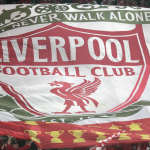
The 1990s continues to haunt us via memories, both true and false. As the 30 year nostalgia cycle gets fully into its stride, it may be time for that most 90s of outcomes, the 40+ point relegation, to make a return. In May 2003, the West Ham United team that many deemed too good to go down, did indeed… go down. Their squad contained the likes of Michael Carrick, David James, Paolo Di Canio and Joe Cole, but still finished 18th. What’s notable about West Ham’s demotion is they did so despite gaining 42 points. Since then, no team reaching even 40 has ever been relegated from the Premier League, with the average total of teams finishing 18th since 2003 being 34, allowing managers of mid-table teams to state that they are aiming to reach 40 points, confident that this will be enough to keep their side in the top division for another year.
But go back into the 1990s and you find a wholly different world. In 1996-97 Sunderland went down with 40 points and in 1998-98 Bolton Wanderers did the same. 1996-97 is famously the closest Premier League season – in terms of gap between top and bottom – ever recorded and Sunderland’s not-enough total of 10 wins that year is only two fewer than Brighton recorded last season when finishing ninth. There are also the seven clubs relegated between 1993 and 1995 with 40+ points, although the additional four games in the 22-team set-up the Premier League had in its first three seasons obviously makes a difference there.
Either way, it’s clear to see that since the mid-2000s, notably the moment where clubs like Chelsea* received considerable financial investment, the Premier League has become much more stretched. In 2020-21 Fulham finished with only 28 points, the lowest points total of any 18th-placed team (based on three points per game) since Bolton in 1902-03, and that was in an 18-team division too. People searching for quality battles in the lower reaches of the Premier League had almost begun to give up, until that season that is.
*one of the first things the newly-enriched Chelsea of 2003 did was go and buy Glen Johnson and Joe Cole from newly-relegated West Ham
With two matchweeks remaining before the Premier League stops for more than a month, the situation at the bottom is competitive to say the least. Nottingham Forest are bottom as it stands but are only seven points behind Liverpool in ninth place, a Liverpool team who account for one of the two Forest wins so far. Wolves are just above in 19th, and have only scored six goals all season, but have still parlayed that into 10 points, while Leicester in 18th have scored more goals than both Chelsea and Manchester United. Yes, Brendan Rodgers’ team are overperforming in attack but that’s because they’re…good? In fact, as you read up the table, it’s hard to find a team without a redeeming quality.
Southampton? The youngest team in the division who should improve as the season goes on
Aston Villa? They’ve literally just appointed Unai Emery as their new manager
Leeds United? They’ve just done a Nottingham Forest and beaten Liverpool
Bournemouth? They lost 9-0 to Liverpool and bounced back more strongly than Alan Partridge

The Opta win predictor model currently has Forest as the favourites for the drop with Bournemouth and Southampton next most likely to be in the Championship. Saints remain the only team in Premier League history to have a goal difference as bad as Forest do currently and still survive, doing so in 1998-99. And there we are again, back in the 1990s when relegation battles were intense and all-encompassing. It’s great to have them back.



